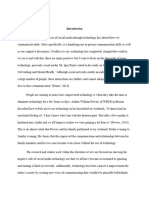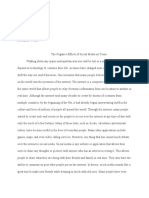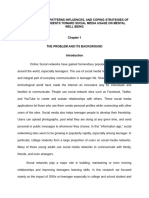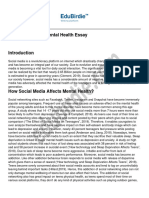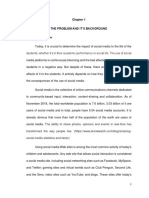0% found this document useful (0 votes)
56 views13 pagesMain Document
Social media usage has dramatically increased over the past 15 years, raising concerns about its impact on psychological well-being, particularly among teens. Research suggests that while social media can both enhance and hinder social interactions, its effects on mental health are complex and influenced by individual user characteristics. Experts advocate for healthier social media habits, emphasizing active engagement over passive consumption and the importance of managing online interactions to mitigate potential negative effects.
Uploaded by
Ellena HankubaCopyright
© © All Rights Reserved
We take content rights seriously. If you suspect this is your content, claim it here.
Available Formats
Download as PDF, TXT or read online on Scribd
0% found this document useful (0 votes)
56 views13 pagesMain Document
Social media usage has dramatically increased over the past 15 years, raising concerns about its impact on psychological well-being, particularly among teens. Research suggests that while social media can both enhance and hinder social interactions, its effects on mental health are complex and influenced by individual user characteristics. Experts advocate for healthier social media habits, emphasizing active engagement over passive consumption and the importance of managing online interactions to mitigate potential negative effects.
Uploaded by
Ellena HankubaCopyright
© © All Rights Reserved
We take content rights seriously. If you suspect this is your content, claim it here.
Available Formats
Download as PDF, TXT or read online on Scribd
/ 13

















